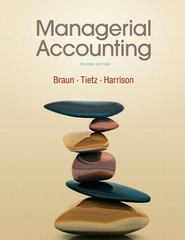Question
2. What are the next steps in this analysis, now that you've calculated the company's implied Enterprise Value according to the DCF? A.You don't need
2. What are the next steps in this analysis, now that you've calculated the company's implied Enterprise Value according to the DCF?
A.You don't need to doanything else - now that you've calculated implied Enterprise Value, you're done with the analysis.
B.You need to calculate the Implied Price per Share - first, you add cash and cash-like items and subtract debt and debt-like items to calculate Equity Value, and then you divide by the share count.
C.You need to calculate the Implied Price per Share - first, you subtract cash and cash-like items and add debt and debt-like items to calculate Equity Value, and then you divide by the share count.
D.It depends on how you're using the output of the analysis - if it's just an informal calculation, you're done, but if it's part of a formal valuation analysis, you need to calculate the Implied Price per Share.
3. What will typically occur with an increase in annual sales?
A.Increases in cost of goods sold and selling, general & administrative expenses.
B.Increases in cost of goods sold and interest expense.
C.Decreases in accrued expenses and prepaid assets.
D.Increases in the effective and statutory tax rate.
4. The following information was summarized from Dragon Company's financial reports:
2016 Balance Sheet:Cash = $50; short-term investments = $80; inventories = $400; accounts receivable = $100; and accounts payable = $125.
2015 Balance Sheet:Cash = $45; short-term investments = $85; inventories = $360; accounts receivable = $120; and accounts payable = $100.
2016 Income Statement: Sales = $1,500 and cost of goods sold = $1,000
2015 Income Statement: Sales = $1,400 and cost of goods sold = $800
Based on this information, Dragon's inventory turnover ratio for 2016 is:
A.2.50x
B.3.95x
C.2.63x
D.2.37x
5. While determining the most profitable company from the given number of companies, which of the following would be the best indicator of relative profitability?
A.Highest current ratio
B.Highest net income
C.Highest operating profit margin
D.Highest retained earnings
6. How does net income differ from operating profit?
A.Operating profit includes interest expense and net income does not.
B.Net income represents the firm's profit after consideration of all revenue and expense reported for an accounting period, whereas operating profit only considers sales revenue and cost of goods sold.
C.The difference is the amount of tax expense.
D.Operating profit is calculated before interest expense, other income or expenses, and taxes, whereas net income includes all of those items.
7. What is the MAIN difference between Cost of Goods Sold (COGS) and Operating Expenses (OpEx) on a company's Income Statement?
A.They're both expenses, but OpEx is almost always significantly bigger than COGS.
B.COGS can reflect only cash expenses, whereas OpEx may include both expenses paid out in cash in the current period, as well as expenses that are owed and which will be paid out in cash in the future.
C.COGS corresponds to expenses that can be *directly* linked to individual products or services sold, whereas with OpEx there is not a direct relationship.
D.COGS is almost always projected as a percentage of revenue, but OpEx is rarely projected that way since it can't be linked to individual units sold.
8. Which is not true when preparing the Statement of Cash Flows section of the forecasted model?
A.Share buybacks will be reported as cash outflows for investing activities.
B.Issuance of stock and debt will be reported as cash inflows from financing activities.
C.Dividend payments will be reported as cash outflows for financing activities.
D.Purchases of investments and intangible assets will be reported as cash outflows from investing activities.
Step by Step Solution
There are 3 Steps involved in it
Step: 1

Get Instant Access to Expert-Tailored Solutions
See step-by-step solutions with expert insights and AI powered tools for academic success
Step: 2

Step: 3

Ace Your Homework with AI
Get the answers you need in no time with our AI-driven, step-by-step assistance
Get Started


